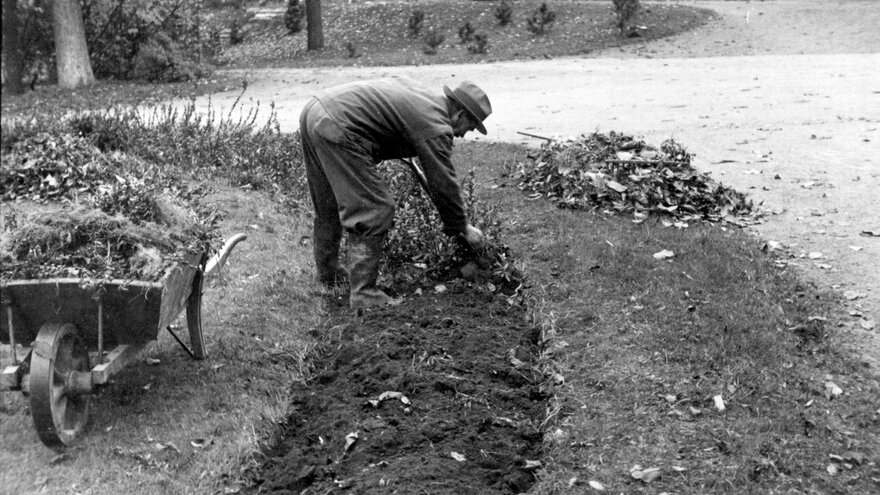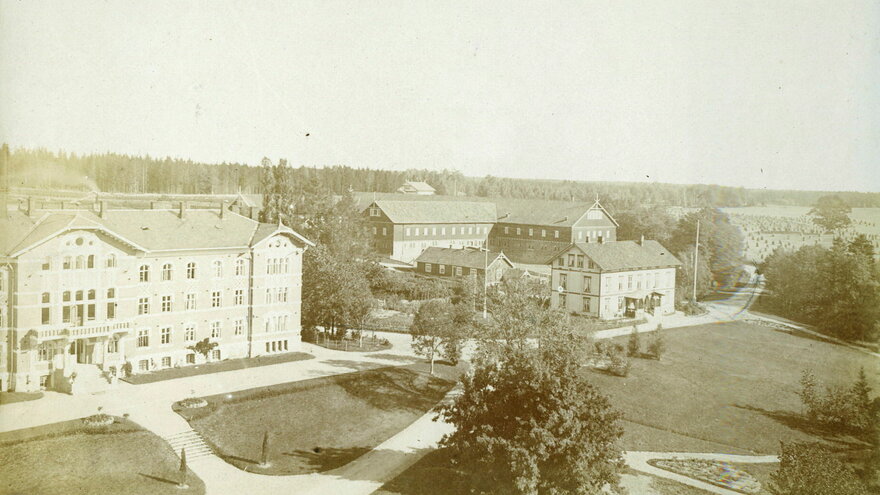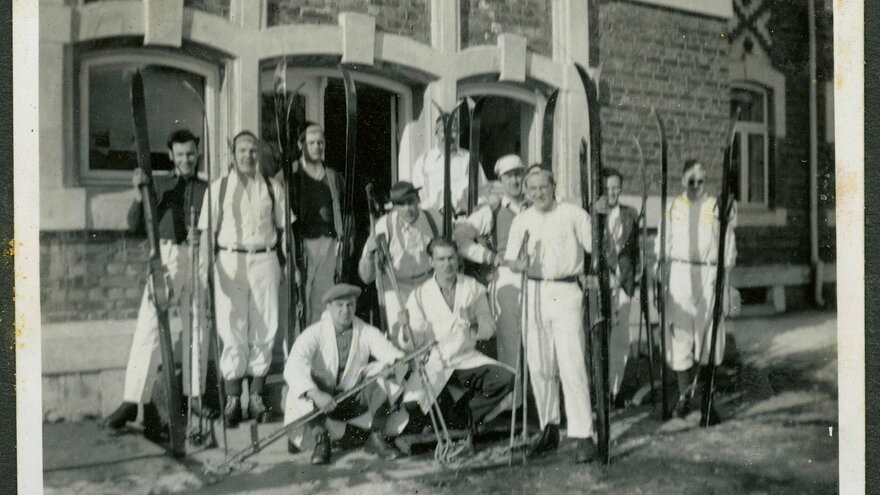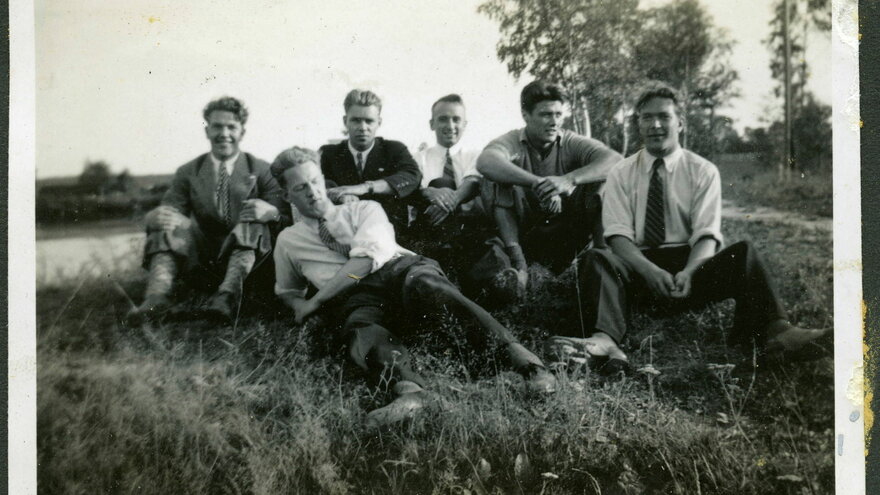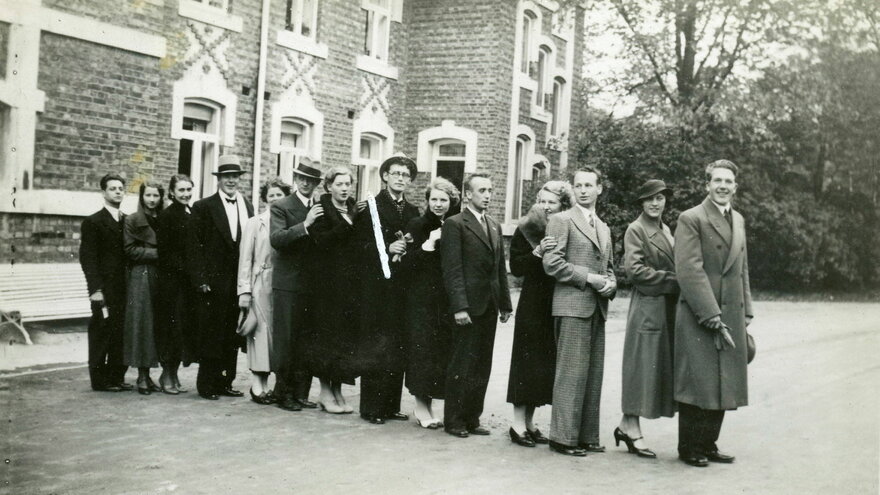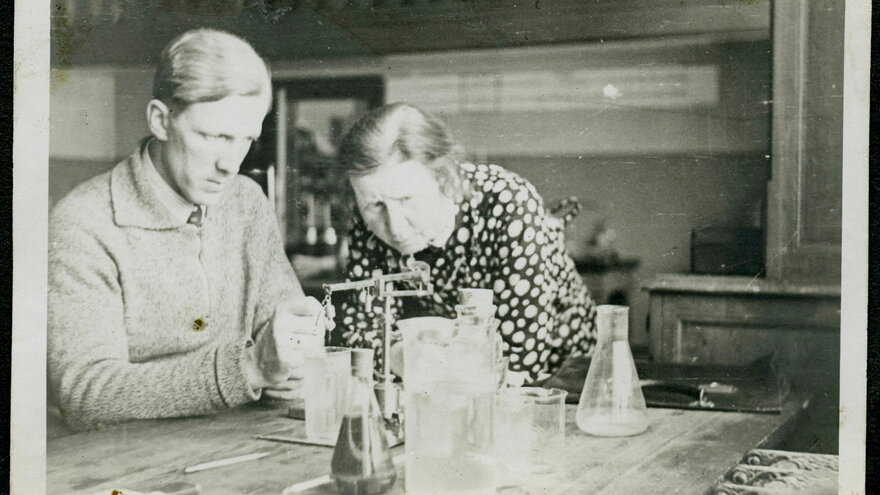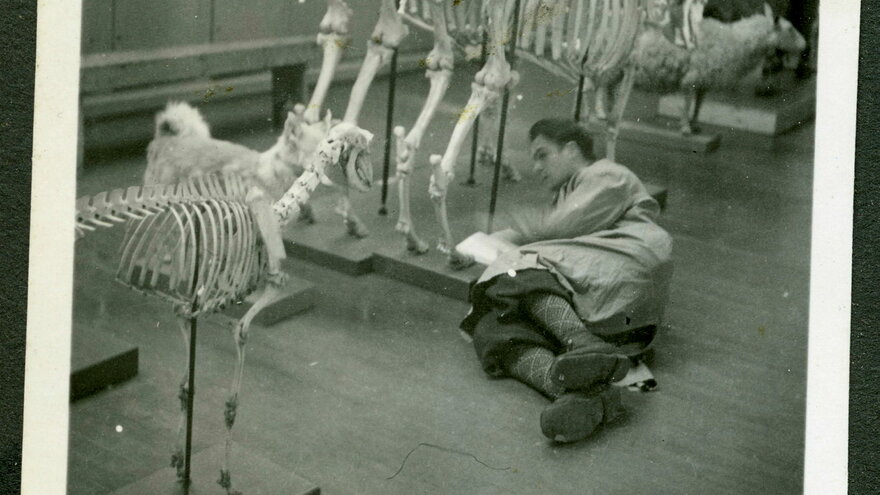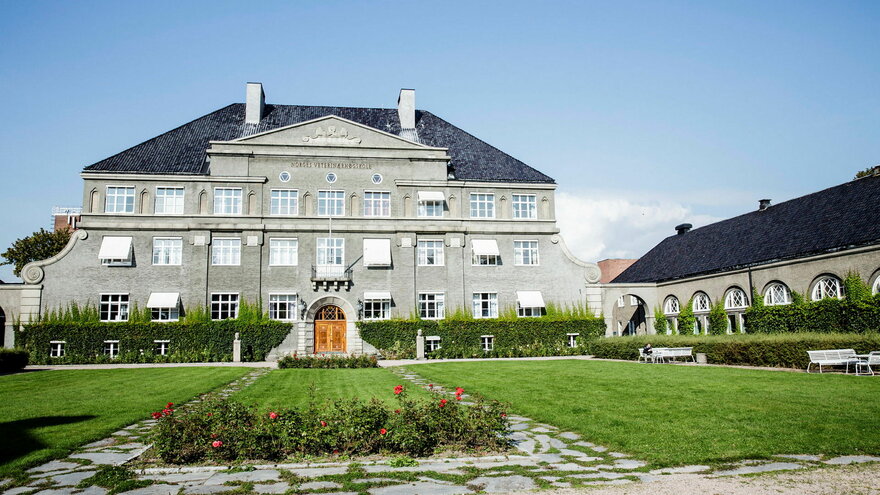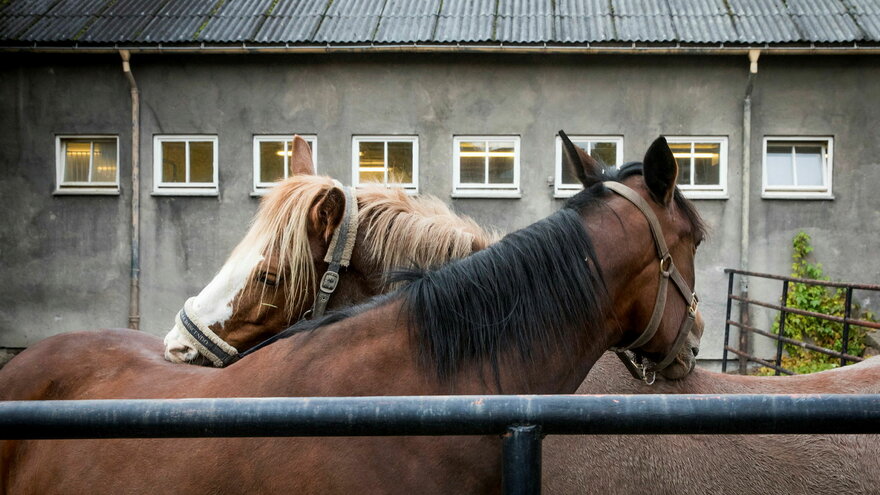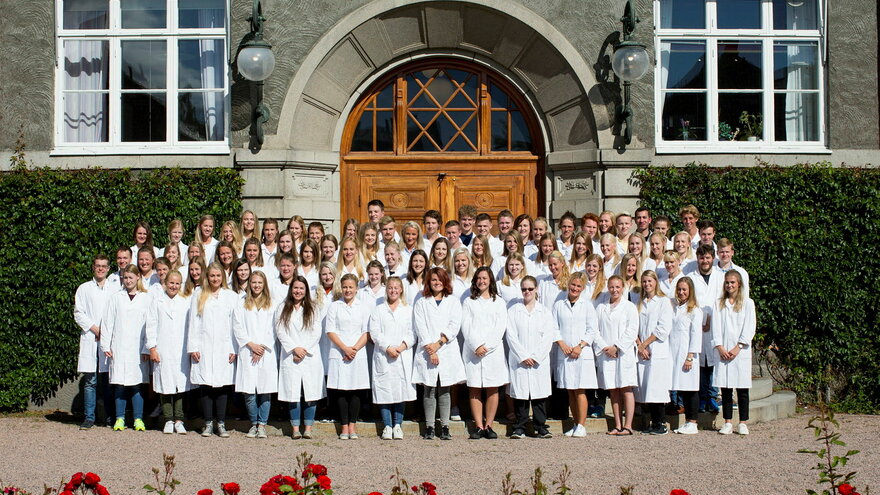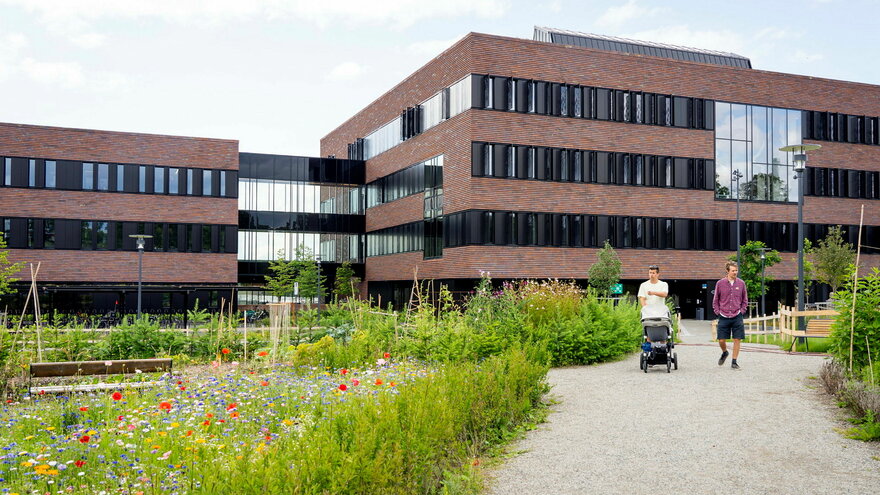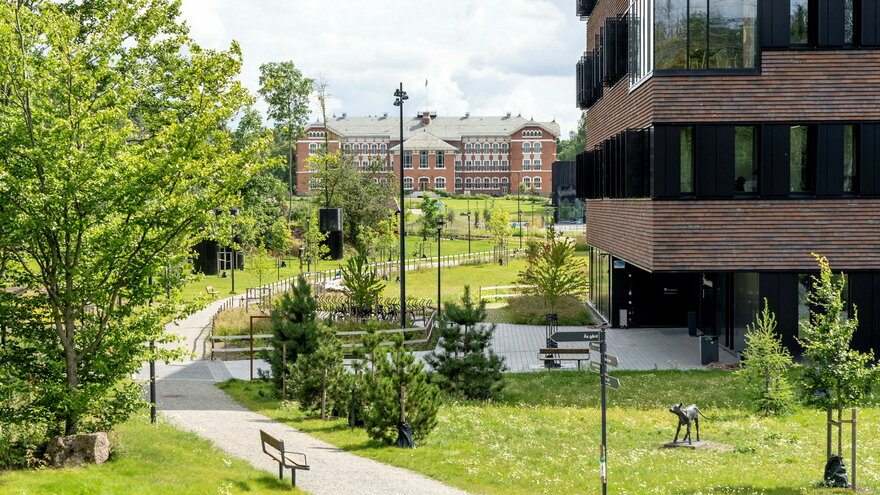The history of NMBU
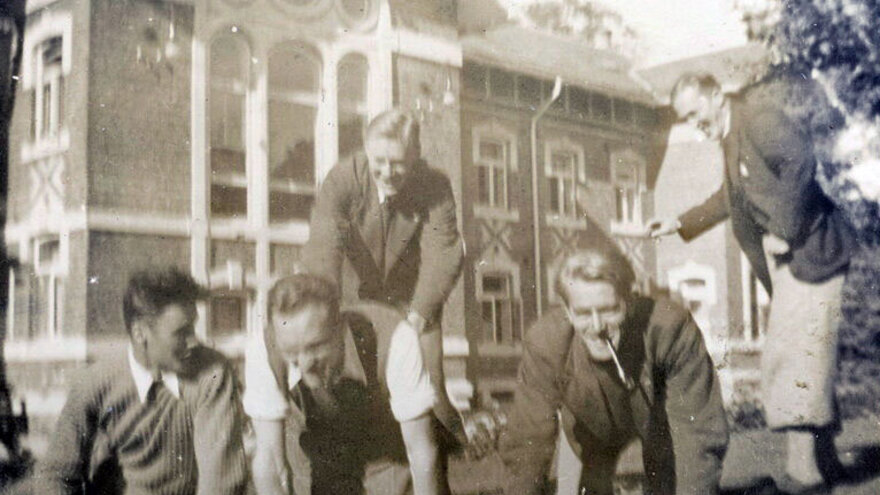
From The Higher Agricultural School in Ås via the Norwegian College of Agriculture (NLH), the University of the Environment and Biosciences (UMB) and the Norwegian Veterinary College (NVH) to the Norwegian University of Life Sciences (NMBU).
As early as 1758, the first plans about higher agricultural education in Norway were put forward. Bergmedicus Becker proposed that such teaching should be added to the newly established Kongsberg Bergseminar, the country's first scientific educational institution with roots in Saxon tradition and the German information period. But the proposal did not go through.
In the decades following the dissolution of the union with Danmark, agricultural schools emerged and after 1844 the numbers increased significantly. By 1857, an agricultural school had been established in each county. All of them were modeled after Jacob Sverdrup’s school in Semb, Borre. They conducted two hours of instruction either in the morning or evening. During this period, the administration (the ministry) became concerned about the lack of teacher education for agricultural schools, leading to the idea of creating a central agricultural school.”
Do you want the short version?
The history of the university in five minutes
The Higher Agricultural School in Ås
The "Den høiere landbrukskole i Ås" traces back to 1854 when The Ministry used Frederik August Dahl (1818-1890) as an advisor in the establishment of higher agricultural education. Dahl was Swedish and had a solid technical-agronomic education. He had experience from work as a manager of a large agricultural estate, as an inspector and assistant teacher at the newly established Ultuna Agricultural Institute. Dahl recommended the purchase of Ås farm (parish farm) and Vollebekk (grove writer's farm) owned by Christian Magnus Falsen. Ås farm was located in the area where the Falsen pillar is today. Dahl was appointed the school's first director and held the position from 1858 to 1880.
On July 28, 1854, the first permit for constructing buildings was granted. Ås prestegard was made available to the parish priest’s office for a compensation of 20,000 spesidalar. The following year, the neighboring Vollebekk farm was acquired for 12,500 spesidalar. The combined area was 3,400 acres, including 1,075 acres of cultivable land.
The school officially began on October 1, 1859. It had five teachers and a farm manager to oversee the 32 students enrolled in a 2-year agricultural education program. Students paid tuition fees and eventually covered their own room and board expenses. By 1860, enrollment declined, and in 1869, the school faced closure. However, the Norwegian Parliament (Stortinget) decided to restructure it. They introduced a 2-year lower-level education and a 1-year higher-level education focused solely on theory, with age and background knowledge requirements.
From 1875, the industry began to demand that Norway should have higher education in forestry and horticulture. In 1886, horticulture entered the teaching.
Around the middle of the 1890s, several committees were appointed to come up with a draft for a new scheme for agricultural, forestry and veterinary education. It was very difficult to agree. Both on where the school would be located, which subject areas it should cover, what kind of prior knowledge would be required and whether the teachers would be titled docents or professors. The committee's final proposal held on to the docent title and equal length for all study directions, it was included in a Parliament Document No. 72 for 1896. The committee thought at the time that the veterinary college had to be located in Kristiania, but that the first year could be placed in Ås.
The bill passed in the Odelsting with 43 to 42 votes. This meant that the Higher Agricultural School in Ås' time was over and it was closed down in 1897.
The Norwegian Agricultural Collage (NLH)
Norges landbrukshøyskole (NLH)
The first semester at Norway's Agricultural College was admitted on August 15, 1897, there were 28 students. In § 1 of the law governing NLH, enacted of May 22, 1897 it is stated. "It shall provide education based on a scientific principles for the training of farmers, foresters, horticulturists, land transfer men and dairy farmers and promote scientific research in the areas covered by the college." Initially the school offered two-years programs for four departments, forestry was a three-year program. This led to significant expansion of the activity and old buildings were extended and refurbished. A large teaching building and teacher residence for five teacher families were built. The teaching staff grew, in 1897 there were 13, in 1898 it increased to 21 and in 1909 the staff consisted of 31 persons. There were 24 graduated students in 1899, in 1906 there were 52, while it dropped to 26 in 1909.
In 1919, all five subjects became three-year courses. At the same time, a new leadership structure emerged, with a rector and a professors committee appointed to lead NLH. 60 years of Directors running the school were over. This administrative arrangement differed from the University of Oslo (UiO) and the Norwegian University of Science and Technology (NTNU).
In the inter-war period and post-war period, the campus at Ås grew steadily, especially in relation to the construction of houses for practical experiments. Various industries supporting forestry, horticulture, agriculture and dairying contributed to the growth of Ås. NLH and other stakeholders collaborated on continuous development and construction projects.
The State School for Small Farm Teachers, initially located in Sem, merged with NLH in 1963, eventually established a pedagogy program.
On January 1, 1997, NLH and the Norwegian School of Veterinary Science (NVH) were moved from the Ministry of Agriculture to the Ministry of Church and Education.
The development of studies after the war
The development of the educational offer at the NLH can naturally be divided into two eras before and after the change of curriculum reform in 1971. The long first period was without major changes in the study offering itself. It was characterized by profession-oriented studies - focusing om training advisors and teachers in agriculture, forestry and horticulture. Additionally it aimed to recruit professionals for land consolidation (land transfer men), landscape architects and dairy industry managers. After the reform of study offer, an extensive and almost continuous adjustment period followed in the 1970s-90s. Agricultural education, in a broad sense, but with broader, more diversified, and flexible study options. New socially and planning-oriented green study programs was introduced.
Parts of the NLH environment worked hard for NLH to establish a 5-year engineering education. And the first cohort of civil engineering students was admitted in the autumn of 1989. A few years later, a study program was put together that led to a Cand.Scient degree. The first cohort to benefit from this course of study started in 1994. These two events laid the foundation for growth in the teaching staff and in the influx of students within engineering and mathematical sciences.
During the 1970s and 1980s, NLH conducted internal assessments to adapt to a rapidly evolving knowledge and job market. This led to reorganization and a reduction in the number of departments (from 35 to 12). NLH then offered 12 study programs: horticulture, animal science, soil and plant science, cartographic science, landscape architecture, natural resource management, food science, natural sciences, planning, forestry, technical disciplines, and economics and resource management.
Employees at NLH worked hard to establish teacher training in Ås, and in 2004, the first cohort began a 5-year teacher education in science didactics and vocational didactics.
The University of Environmental and Biosciences (UMB)
Universitetet for miljø og biovitenskap (UMB)
In the 1990s, there was an increased emphasis on goal-setting and planning within the state sector. This gradually evolved into the concept of performance management. As a result, the university and college sector were measured, and parts of their funding were allocated based on production results. A new reorganization followed this new management approach. In 2003, 12 institutes were merged into seven. A couple of years later, Noragric was incorporated as an institute, bringing the total to eight. The student population has now stabilized at just under 3000. After changes to the University Act on January 1, 2005, universities and colleges gained the ability to appoint rectors.
For a long time, NLH had a broad field of expertise with strong research traditions. When the opportunity to apply for university status arose, the college quickly submitted an application. After a vigorous debate about naming both within the college and in parliament, it was decided that the university in Ås would be named University for Environment and Biosciences (UMB). On December 10, 2004, the King approved in the Council of Ministers that The Norwegian University of Agriculture should be given university status. Minister of Agriculture Lars Sponheim and Minister of Education and Science Kristin Clemet were present to congratulate. Crown Prince Haakon and Mette Marit visited and the Universitetslunden, by Andedammen, was ceremoniously opened.
At UMB, a rector was appointed, serving as the chair of the university board. At the institute level, institute leaders were appointed for fixed terms, serving as both daily managers and board members of the institute.
During this time there were approximaely 2,800 students in Ås.
The Norwegian Veterinary College (NVH)
Norway's Veterinary College was established at Adamstua in Oslo in 1935, Architect Bredo Greve was commissioned to design the school complex, which was intended to showcase national monumentality. The Royal Veterinary and Agricultural College in Copenhagen was a model. The earliest buildings were completed in the 1920s, and the final major construction project, a joint building with the Veterinary Institute and the Norwegian Food Safety Authority (Mattilsynet), was finished in 1996. The merger between the Norwegian Veterinary College and the University of Environmental and Bioscience (UMB) took place in 2014, and the Veterinary College (NVH) relocated to Ås in 2021.
The Norwegian University of Life and Sciences (NMBU)
In 2006 and 2007 there were significant discussions about the merging the Norway's Veterinary College (NVH) and UMB. This turned out to be a challenging matter. The final decision was postponed three times in the Norwegian Parliament (Stortinget). In 2008, it was decided that NVH would move from Adamstuen in Oslo to Ås. In 2014, the two institutions were merged and the university was named The Norwegian University of Life Sciences (NMBU). King Harald was present at the solemn official opening ceremony in Aud Max, the university's main hall.
In 2016, the university board decided that NMBU would have a rector who was appointed rather than elected. After extensive planning, construction began on the facilities that would house the Veterinary Collage (NVH) and the Veterinary Institute (VI). Despite significant cost overruns and delays, the entire Veterinary Collage, along with equipment, staff, and livestock, moved from the capital in 2021. The Veterinary Institute followed a little later. Both institutions settled into nearly completed premises, equipped with almost entirely new facilities, at a cost of nearly 10 billion NOK.
As of 2024, the university will have approximately 7,000 students. Some of whom are enrolled in online studies.
For the period up to 1950, the information is largely taken from the compendium "Buildings at Norges Landbrukshøgskole designed by architect Ole Sverre", written in 1996 by Erik Aas jr. And the anniversary books Norwegian Agricultural College 1859-1909, Norwegian Agricultural College 1859-1934 and Norwegian Agricultural College 1859-1959.
